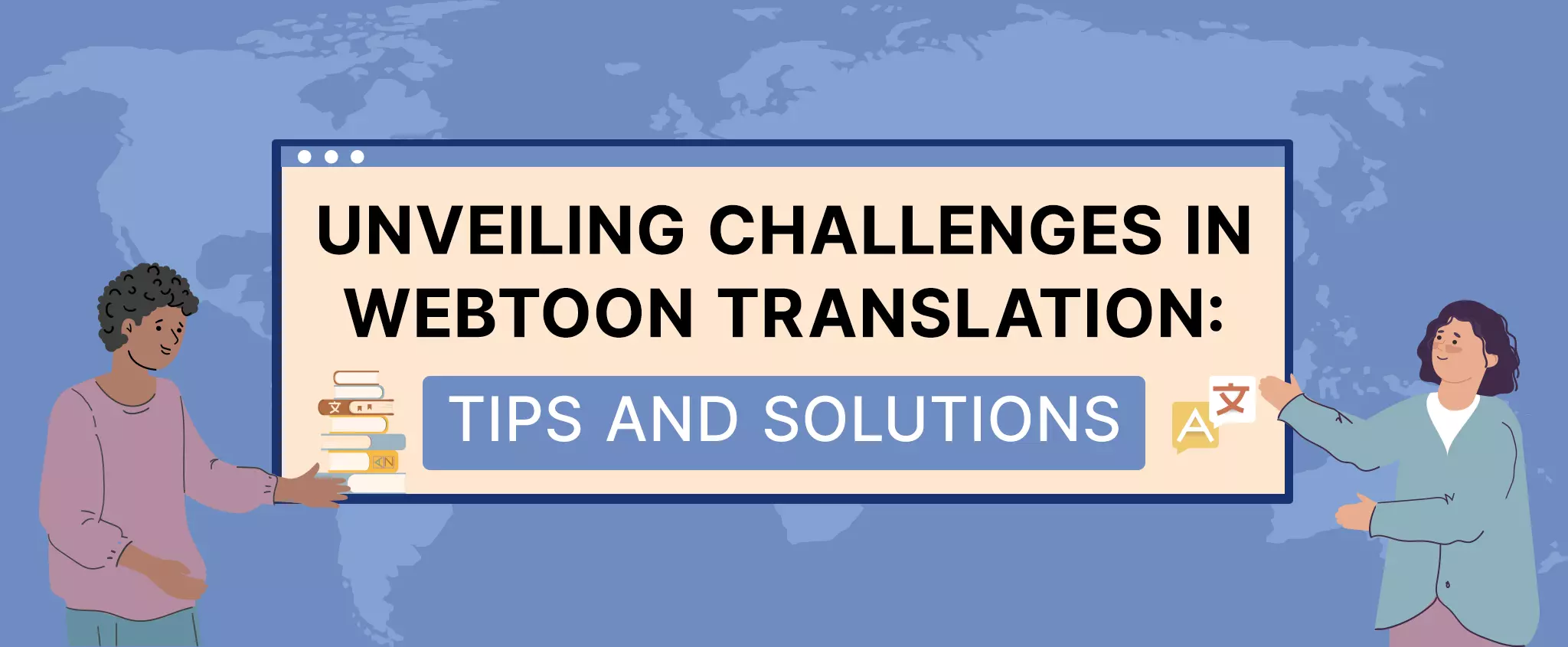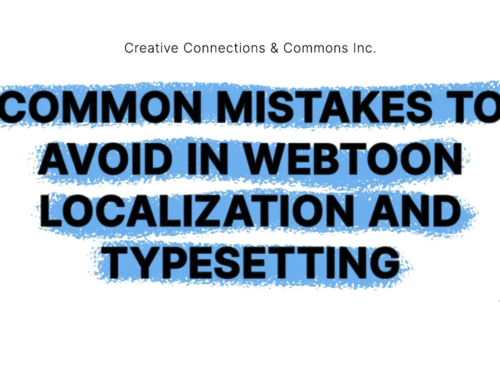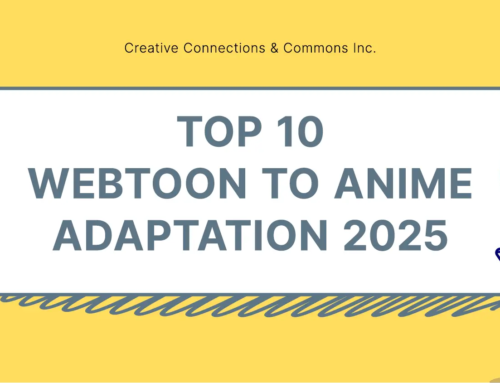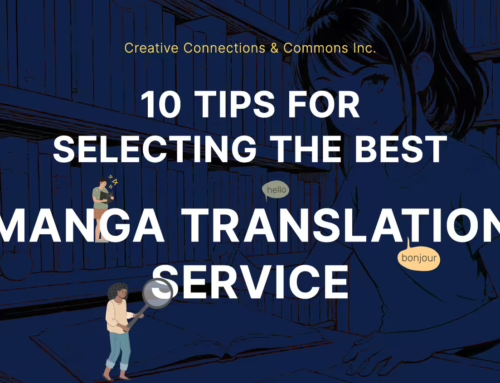Webtoons have gained immense popularity worldwide, with one of the largest platforms drawing over 72 million monthly active users. However, this popularity comes with challenges in webtoon translation.
In this comprehensive guide, we will unravel the intricacies of webtoon translation. Join us as we identify common webtoon translation problems and explore the best solutions to address them.
Key Takeaways:
- Challenges in webtoon translation revolve around quality, in terms of fidelity to the original and cultural contexts.
- Finding the balance between localization and translation is one of the key webtoon translation problems.
- Preserving emotional impact and message effectiveness when translating sound effects or dialogue requires professional translation services like CCC.
Table of Contents:
- The Art of Webtoon Translation
- Common Challenges in Webtoon Translation
- Cultural Nuances in Webtoon Translation
- Translating Visual Elements
- Translating Sound Effects in Webtoons
- Webtoon Translation Tools and Technology
- Tips for Webtoon Translation Quality
- CCC’s Expertise in Webtoon Localization
- Conclusion
The Art of Webtoon Translation
Webtoon translation is a craft that goes beyond mere linguistic proficiency. It requires an intricate understanding of the visual and emotional aspects of the medium. Translators must pay attention to character expressions, visual cues, and panel layouts to provide a holistic translation experience.
Common Challenges in Webtoon Translation
Webtoon translation is not without its hurdles. Challenges arise from linguistic disparities, humor, and regional nuances that don’t always have direct equivalents in other languages. Translators often face the struggle of balancing faithfulness to the source material with making it relatable to the target audience.
Professional Input
Hyung Gu Lynn of the University of British Columbia offered his insights into the challenges in webtoon translation. He is the AECL/KEPCO Chair in Korean Research at the Institute of Asian Research and the Department of Asian Studies.
In his research, he discussed the growth of South Korean webtoons since their introduction in the early 2000s. This popularity focused primarily in a domestic market with potential for global expansion.
Translating that domestic success into sustainable exports was his central question. In this context, translation went beyond mere language, considering infrastructure and branding for successful global expansion.
Cultural Nuances in Webtoon Translation
When it comes to webtoon translation, cultural nuances play a pivotal role. Understanding the cultural context of the source material is essential for an accurate and engaging translation. It’s crucial to convey the emotions and customs of the original story to resonate with a global audience.
Hyung Gu Lynn mentioned this concept in his article. Specific webtoon translation problems in terms of language included quality. He highlighted the need for consistency in terms of fidelity to the original and culturally contextualized renderings. In addition, selecting the right titles for translation was an important point.
Transcending Cultural Boundaries
Webtoons often incorporate cultural elements that may not be universally understood. Translators must navigate these cultural nuances to ensure that readers from different backgrounds can appreciate the story fully.
Some strategies include providing footnotes or context within the webtoon to explain cultural references without disrupting the reading experience. Translators who approach their work this way minimize the risk of things getting lost in translation.
Pro Tip: To enhance the reader’s experience, we advise translators to seamlessly integrate cultural explanations within the narrative’s presentation. You may do so either in the margins or footnotes. This approach ensures that essential cultural references are provided without disrupting the text’s overall readability.
Translating Visual Elements
Visual cues, such as characters’ facial expressions, gestures, and the overall artwork, are integral to webtoon storytelling. A skilled webtoon translator should not only translate the text but also ensure that the visual elements are faithfully represented. It can be particularly challenging, as translating images and emotions isn’t a one-to-one process.
Translating Sound Effects in Webtoons
One unique aspect of webtoons is the presence of sound effects. These visual and textual cues add depth and atmosphere to the story. Translating them requires creativity and a deep understanding of the story’s mood.
Note: Finding the right words to match the impact of these sound effects can be a daunting task. For instance, consider the Japanese sound effects ぼたぼた(bota bota) and ネチョネチョ (necho necho). Both represent dripping noises but the latter is specific to thicker fluids. Novice translators might put a note to explain this but a seasoned translator may use “glop glop” instead.
Webtoon Translation Tools and Technology
In the digital age, translators have a range of tools and technology at their disposal to aid in webtoon translation. Machine translation and computer-aided translation (CAT) tools can help improve efficiency, but practice caution. Human translators provide the necessary creativity and cultural insights that machines simply cannot capture.
Pro Tips: To ensure linguistic and visual coherence in a webtoon series, consider leveraging translation memory (TM) software for consistent terminology. Employing visual translation tools for precise contextual adaptation within images is another way to capture context accurately. Finally, collaborate closely with graphic designers to seamlessly integrate translated text into the original artwork.
Tips for Webtoon Translation Quality
To overcome the challenges in webtoon translation, consider these pro tips:
- Collaborate with experienced translators who understand the genre.
- Maintain consistency in terminology and character names.
- Pay attention to dialogue flow and character voice.
- Seek feedback from native speakers for authenticity.
- Use localization techniques to adapt content for different cultures.
CCC’s Expertise in Webtoon Localization
CCC is more than just a translation service provider; we specialize in webtoon localization. Localization is like a step beyond translation. It involves incorporating cultural adaptation, ensuring the story resonates with the target audience, and addressing specific linguistic and regional challenges.
With CCC, you can trust that your webtoons will be accurately translated and thoughtfully localized. Our team of skilled professionals will apply manga translation and localization proficiencies to ensure a seamless and culturally sensitive translation. Let us help you make webtoons accessible to a global audience!
Pro tip: When seeking the top-notch webtoon translation services, be sure to select a partner with a strong track record. Consider requesting for multilingual translation samples to confirm your partner is skilled in various translation types.
CCC – Professional Webtoon Translation Company
Addressing the challenges in webtoon translation involves ensuring work that is both linguistically precise and culturally engaging. Ultimately, translating and localizing your stories aims to expand your audience reach.
With CCC as your partner, you can resolve complex webtoon translation problems with confidence. Our expertise in translation and localization ensures that your webtoons will shine in the global market. Make readers across the world understand your stories. Contact us to transcend linguistic boundaries and cultural barriers.









